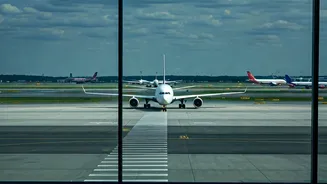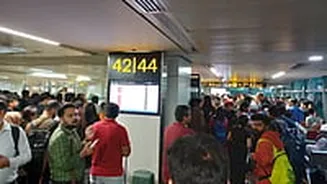Initial Flight Disruptions
Early reports indicated significant challenges impacting air traffic control within the US. These problems prompted the Federal Aviation Administration
(FAA) to issue flight cuts at key airports. This move was a direct response to the technical issues that were impeding the smooth functioning of air travel. Consequently, numerous flights were either delayed or canceled altogether, causing frustration among passengers and adding further strain on the already complex operations of air travel.
Airport Operations Affected
The air traffic control problems have affected many major airports across the United States. Reports highlighted that several prominent hubs were particularly hard hit by the disruptions. Airlines were forced to adjust their planned operations. This involved both the reduction of scheduled flights and the rearrangement of flight schedules in an attempt to maintain some level of service. As a result, passengers experienced long delays. These were made worse by the uncertainty and the general lack of clarity surrounding the problems.
Airlines Adapt Quickly
As news of the ongoing issues spread, airlines began proactively to modify their plans to manage the effects. They announced adjustments to their flight schedules to respond effectively. These changes were aimed at reducing the volume of flights and, therefore, the pressure on air traffic control systems. Airlines have had to make difficult decisions, prioritizing safety and trying to offer passengers the best possible service in difficult conditions. This required them to constantly reassess the situation and change their strategies to deal with the continuously evolving conditions.
Passenger Impacts and Delays
The main consequence of these issues has been significant disruption for passengers. Many travelers encountered unexpected delays, while others had their flights canceled. These situations led to a variety of difficulties for passengers. The impact included missed connections and disruptions to various travel plans. The overall situation underscored the degree to which air travel is reliant on seamless operations of air traffic control. The disruption caused significant inconvenience for air travelers.
Ongoing Adjustments Continue
As the situation developed, the FAA continued to closely monitor and manage the air traffic control issues. Airlines were required to make further adjustments to their schedules. This often involved the cancellation of further flights to reduce the burden on air traffic management. The impact of the incident emphasized the interconnectedness of the aviation network and how vulnerabilities in one part of the system can have far-reaching consequences. This led to a period of uncertainty for the industry.














